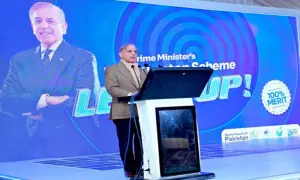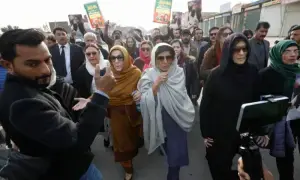Lata Mangeshkar: A class apart
Lata Mangeshkar, also affectionately known as Lata Di, to those closest to her was a singer phenomenon like no other. She had a career spanning 60 years and a voice that could easily extend over three octaves with an ease rarely ever witnessed before.
She started to train by the age of five with her father, a noted Marathi stage personality, which enabled Mangeshkar, the eldest of five children to record her first song at the tender age of 13 for a Marathi film Kiti Hasaal. However, the song never made it to the final cut.
Apart from her training in the Gwalior gharana through her father, Mangeshkar was also trained by masters such as Aman Ali Khan and Amanat Khan. She struggled to not only support her family as a teenager but to also make her place in the industry in the 1940s, while stars such as Shamshad Begum and Noor Jehan were also reigning supreme.
But it was her song for the film Andaz in 1949, “Uthaye Ja Unke Sitam” that sealed her fate, with almost every music director of the time, including SD Burman, Naushad Ali and Madan Mohan starting to compose tunes specifically to exploit or entertain the vocal range that Mangeshkar brought. She also sang behind almost all leading ladies, starting from the likes of Nargis and Waheeda Rehman, all the way to Mahaduri and Preity Zinta. Some films like Mahal (1949), Satyam Shivam Sundaram (1978) and even Maine Pyar Kiya (1989) were all commercial successes owing more to her singing than anything else.
She has moved audiences to tears with the purity and intensity of her voice, appealing to people of all ages with a simplicity in both her voice and appearance that was unmatched, even in her sister Asha Bosle, who became a singing star in her own right.
By 1991, Mangeshkar already had 30,000 solos, duets, chorus backed songs and recordings, spanning across 14 Indian languages in the time frame 1948 to 1987. She was also honoured with India’s highest civilian award in 1999 and by 2001 also the Barat Ratna, making her only the second celebrity in India a recipient of the award.
Apart from her talent, and achievements, there was a magic in her voice and my personal earliest memories of her songs are spinning around in my Islamabad house’s lounge circa 1989 or 90, just spinning in circles while her hit song “Yaara Seeli Seeli” serenaded me. I was barely four or five but my family swears that if the song was on, I would just simply spin around till I could not stand straight anymore.
Such was the power of Lata Di, someone who never knew me but gave a glimpse of their soul to the world, through their song. The compositions created for her were simple enough to appeal to all ages but her voice deep enough to leave lasting impressions for years to come. I can still badly sing the entire song from memory.
As I sit here and listen to Seeli Seeli winding up my piece, I realise that even today, it is not just the nostalgia attached to her songs that made Mangeshkar phenomenal but in fact the timelessness of her voice that made her fandom span to almost all ages. Her demise has left a void behind in the arts and entertainment industry of the now broken subcontinent, a void that no one may be able to fill till years to come. Rest in peace Lata di and thank you for all the magic.
For the latest news, follow us on Twitter @Aaj_Urdu. We are also on Facebook, Instagram and YouTube.




















Comments are closed on this story.